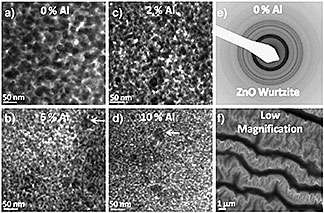High-temperature sensor technologies to increase power plant efficiency

The sensors team at DOE's National Energy Technology Laboratory is working on sensor technologies to enable embedded gas sensing at high temperature. The team's goal is to develop novel materials with large optical responses and high-temperature stability for integration with optical sensor platforms.
High-temperature harsh environment conditions are relevant for a diverse range of advanced fossil energy applications, including solid oxide fuel cells, gas turbines, and advanced combustion systems. Real-time monitoring of critical process parameters could significantly impact existing power plants by increasing efficiency and reducing emissions. It would also encourage the successful adoption of next-generation fossil fuel-based power generation technologies. For high-temperature environments, optical sensor technologies offer benefits over alternative chemi-resistive gas sensors, which are limited by a need for electrical wiring to the embedded location and unstable electrical contacts and connections.
Through a combination of theoretical simulations and experiments, the team has demonstrated that transparent conducting oxides such as Al—doped ZnO show significant promise for high-temperature optical gas sensing in the near—infrared (IR) wavelength range. For this unique class of materials, electrical conductivity can be directly linked with the near—IR optical absorption features, allowing for direct optical transduction of the more commonly investigated chemi-resistive sensing responses. In the case of nanoparticle-based films, a free electron resonance gives rise to a sharp absorption feature in the near-IR. To date, researchers have demonstrated useful sensing responses at temperatures approaching 700 °C using this approach. The team believes that higher temperatures are achievable in the future through the identification of transparent conducting oxide behavior in doped variants of higher temperature stable oxide systems. A recent article published in Thin Solid Films, 539 (2013) 327–336, discusses a demonstration of the concept for the Al-doped ZnO system.
A non-provisional patent application on the concept was also filed on June 26, 2013 (U.S. 13,927,223).
More information: Paul R. Ohodnicki Jr., Congjun Wang, Mark Andio, "Plasmonic transparent conducting metal oxide nanoparticles and nanoparticle films for optical sensing applications," Thin Solid Films, Volume 539, 31 July 2013, Pages 327-336, ISSN 0040-6090, .
Provided by US Department of Energy




















